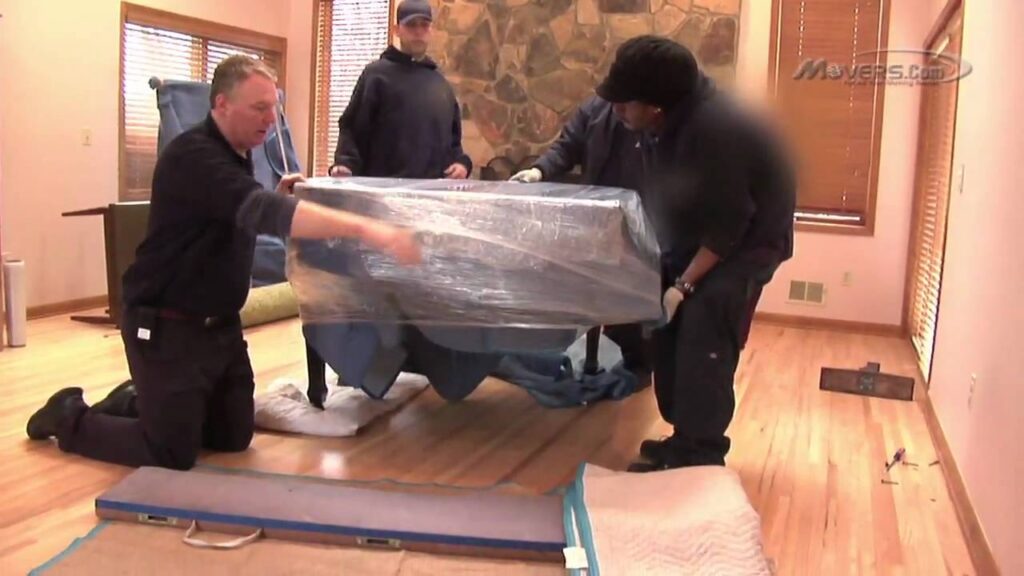
Moving a piano can be one of the most challenging and stressful tasks when relocating, particularly because of the size, weight, and fragility of the instrument. Whether it’s a grand piano, upright, or digital piano, ensuring its safety during the move is crucial for both the piano’s preservation and the safety of the people involved in the relocation. Trusted moving specialists like Tetrisflytt understand the complexity of handling such delicate instruments and bring the expertise required to make the process smoother. In this guide, we’ll walk you through the best practices for packing and moving a piano safely, including the right tools, methods, and tips for avoiding damage to both your piano and your home.
Understanding the Challenges of Moving a Piano
Pianos come in various shapes and sizes, and each type requires a specific approach to moving. Grand pianos, for example, have delicate internal components, such as strings and hammers, which can be easily damaged if not properly packed. Upright pianos, while slightly easier to move, are still heavy and require care during transportation to avoid damaging their wooden exterior and internal mechanisms.
In addition to the physical challenges, pianos are also valuable, often representing significant financial and sentimental value. This makes the need for a well-planned and professional approach to moving even more important. Whether you’re moving locally or across the country, here’s how to safely pack and move a piano.
Tools and Materials You’ll Need
Before you begin, gather the necessary tools and materials to ensure that the piano is adequately protected during the move:
- Moving blankets: These thick, soft blankets will protect your piano from scratches, dents, and damage.
- Bubble wrap or shrink wrap: Used for extra protection around the piano’s delicate areas, especially the keyboard and pedals.
- Heavy-duty piano dolly: A piano dolly is specifically designed for supporting the weight of the piano and making it easier to move.
- Straps: These will be used to secure the piano to the dolly and to protect it from shifting during the move.
- Piano moving board or skid board: Used to secure the piano during loading and unloading, providing an easier way to lift and tilt the instrument.
- Furniture sliders: These can be placed under the piano’s legs to help slide it across floors with minimal effort.
With the right tools in hand, let’s look at the steps involved in packing and moving your piano.
Step 1: Preparing the Piano for the Move
Disconnect the Piano Components
Local movers you can trust recommend that before you start wrapping and moving, it’s important to disconnect any removable components of the piano. If you have a digital or electronic piano, unplug it and remove the power cords and any accessories like stands, pedals, or music benches. For a traditional acoustic piano, check if any parts (such as the music stand or lid) can be removed to make the piano lighter and easier to handle.
Secure the Keyboard and Pedals
To avoid damage to the keyboard and pedals, it’s a good idea to secure them with soft material like foam padding or towels. For grand pianos, you can close the lid, but for upright pianos, use a piece of sturdy cloth or plastic wrap to cover the keys, keeping them in place.
Protect the Piano’s Exterior
Wrap the entire piano in moving blankets or a combination of blankets and bubble wrap. Be sure to cover all corners, edges, and legs to protect the wood from scratches and dents. For extra protection, shrink wrap or heavy-duty plastic can be used around the moving blankets to keep them in place.
Step 2: Lifting the Piano
Pianos are heavy, and attempting to lift them without the proper technique can result in serious injury or damage to the piano. It’s important to enlist the help of at least two to four people, depending on the size and type of piano. You may also want to consider hiring professional movers who specialize in piano relocation.
Use a Piano Dolly
Once the piano is properly secured with blankets and wrap, carefully lift it onto a piano dolly. A piano dolly is designed to distribute the weight of the instrument evenly, making it easier to roll the piano across floors and through doorways. If you’re moving a grand piano, be extra cautious, as their large, curved bodies can make them tricky to handle.
Avoid Lifting by the Pedals or the Lid
Never attempt to lift the piano by the pedals, legs, or lid. These parts can easily break off and cause irreparable damage to the instrument. Instead, lift the piano from its solid base or side, ensuring that the weight is balanced evenly.
Step 3: Moving the Piano
Navigating Doorways and Hallways
Once the piano is securely on the dolly, you can begin moving it towards the door. Carefully navigate through doorways and hallways, ensuring that there is enough clearance to avoid scraping or damaging the piano’s exterior. Move slowly and steadily, taking extra care when moving the piano around corners.
If you are dealing with stairs, ramps, or uneven ground, it’s best to hire professional piano movers who have the experience and equipment to handle these challenges.
Use Piano Skid Boards for Lifting
For long distances or if you need to move the piano up or down a flight of stairs, consider using a piano skid board or lifting straps. These boards will allow you to lift the piano at an angle, which makes it easier to load it into the truck or up the stairs without putting too much strain on the movers.
Step 4: Loading the Piano Into the Moving Truck
Use a Truck with a Low Ramp
When loading a piano into a moving truck, it’s important to use a vehicle that has a low ramp, so the piano is not at a steep angle when it’s being loaded. Many moving trucks have ramp options that are ideal for pianos. If the truck doesn’t have a ramp, use a piano ramp to gently guide the dolly into the truck.
Secure the Piano in the Truck
Once the piano is inside the truck, secure it in place with heavy-duty straps. You want to prevent the piano from moving around during transit, as this can cause internal and external damage. Position the piano against the wall of the truck, and ensure it is stable before proceeding with other items.
Step 5: Unloading the Piano
Carefully Move the Piano Into Your New Home
Unloading the piano requires the same care and caution as loading it. If you’re moving to a home with stairs, have a ramp or skid board ready. Slowly and carefully guide the piano to its final destination, making sure to clear any obstacles along the way.
Reassemble and Fine-Tune the Piano
Once the piano is in its new home, carefully remove the protective wrapping. If you removed any components earlier, reassemble them. Check the piano for any signs of damage and ensure that all parts are functioning properly. It’s also a good idea to have a professional tuner come in to fine-tune the piano after it’s been moved to ensure its sound quality is restored.
Tips for a Successful Piano Move
- Hire Professionals: If you’re unsure about handling the piano on your own, consider hiring a specialized piano moving company. These experts have the necessary tools, experience, and knowledge to move your piano safely and efficiently.
- Plan Ahead: The key to a successful piano move is careful planning. Start the process early and give yourself plenty of time to gather materials, arrange logistics, and find the right team to help you.
- Consider Climate and Environment: Pianos are sensitive to extreme temperatures and humidity. When moving your piano, make sure it is protected from heat, cold, and moisture, which can affect its tuning and condition.
Conclusion
Moving a piano is no small feat, but with the right preparation, tools, and technique, you can ensure that your instrument reaches its new home safely and in one piece. Whether you’re relocating a grand piano, upright, or digital piano, following these steps and enlisting the help of professionals will minimize the risk of damage and help preserve the integrity of your precious instrument. Happy moving!















